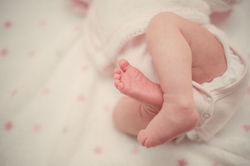Specialista in Ginecologia e Ostetricia
 movimenti bambino baby's movementsmovimenti bambino baby's movements |  movimenti bambino baby's movementsmovimenti bambino baby's movements |
|---|---|
 movimenti bambino baby's movementsmovimenti bambino baby's movements |  movimenti bambino baby's movementsmovimenti bambino baby's movements |
 movimenti bambino baby's movementsmovimenti bambino baby's movements |  movimenti bambino baby's movementsmovimenti bambino baby's movements |
 movimenti bambino baby's movementsmovimenti bambino baby's movements |  movimenti bambino baby's movementsmovimenti bambino baby's movements |
 movimenti bambino baby's movementsmovimenti bambino baby's movements |
BABY’S MOVEMENTS
Most women are first aware of their baby moving when they are 18–20 weeks pregnant. However, some may not become aware of them until they are more than 20 weeks pregnant. Pregnant women feel their baby’s movements as a kick, flutter, swish or roll.
As the baby grows, both the number and type of movements will change. Usually, afternoon and evening periods are times of peak activity. During both day and night, the baby has sleep periods (with no movements) that usually last between 20 and 40 minutes, and are rarely longer than 90 minutes.
During pregnancy, feeling a baby’s movements gives reassurance of wellbeing. If he is moving less than usual or there is a change in the pattern of movements, it may sometimes be a sign that baby is unwell.
There is no specific number of movements that are considered normal. The mum needs to be aware of her baby’s individual pattern of movements. A reduction or a change in baby’s movements is what is important. There is not enough evidence to recommend the routine use of a movement chart.
Some factors can affect the way baby’s movements are perceived:
-
Mothers are less likely to be aware of their baby’s movements when you are active or busy
-
Anterior placenta: a placenta placed in front of the womb can reduce the propagation of baby’s movements vibrations.
-
Baby’s back is lying at the front of the uterus. On the contrary, it is easier to feel the movements if his back is lying alongside the mother’s own back.
Causes of reduced movements:
-
Certain drugs such as strong pain relief or sedatives
-
Alcohol and smoking
-
Rarely, a condition affecting the muscles or nerves may cause the baby to move very little or not at all
If the baby’s movements are reduced or changed, it is necessary to seek professional help. Do not rely on any home kits for listening to the baby’s heartbeat. Do not wait until the next day to seek help.
The management depends on the stage of pregnancy:
-
Less than 24 weeks pregnant: most women first become aware of their baby moving when they are 18–20 weeks pregnant. If by 24 weeks they have never felt baby’s movements, it is necessary to arrange an ultrasound scan.
-
Between 24 weeks and 28 weeks pregnant: ultrasound to check the baby’s heartbeat and wellbeing parameters. Full maternal antenatal check-up.
-
Over 28 weeks pregnant: baby’s heart rate and movements monitoring, usually for at least 20 minutes. ultrasound to check the baby’s heartbeat and wellbeing parameters. Full maternal antenatal check-up.
These investigations usually provide reassurance that all is well. Most women who experience one episode of reduction in their baby’s movements have a straightforward pregnancy and go on to have a healthy baby.
In case of another episode of reduced movements it necessary to repeat the assessment again. Never hesitate to seek professional advice.
Sources and acknowledgment
RCOG Green-top Guideline No.57, Reduced Fetal Movements, published in February 2011
Your baby’s movements in pregnancy. February 2019. RCOG patient information leaflets
